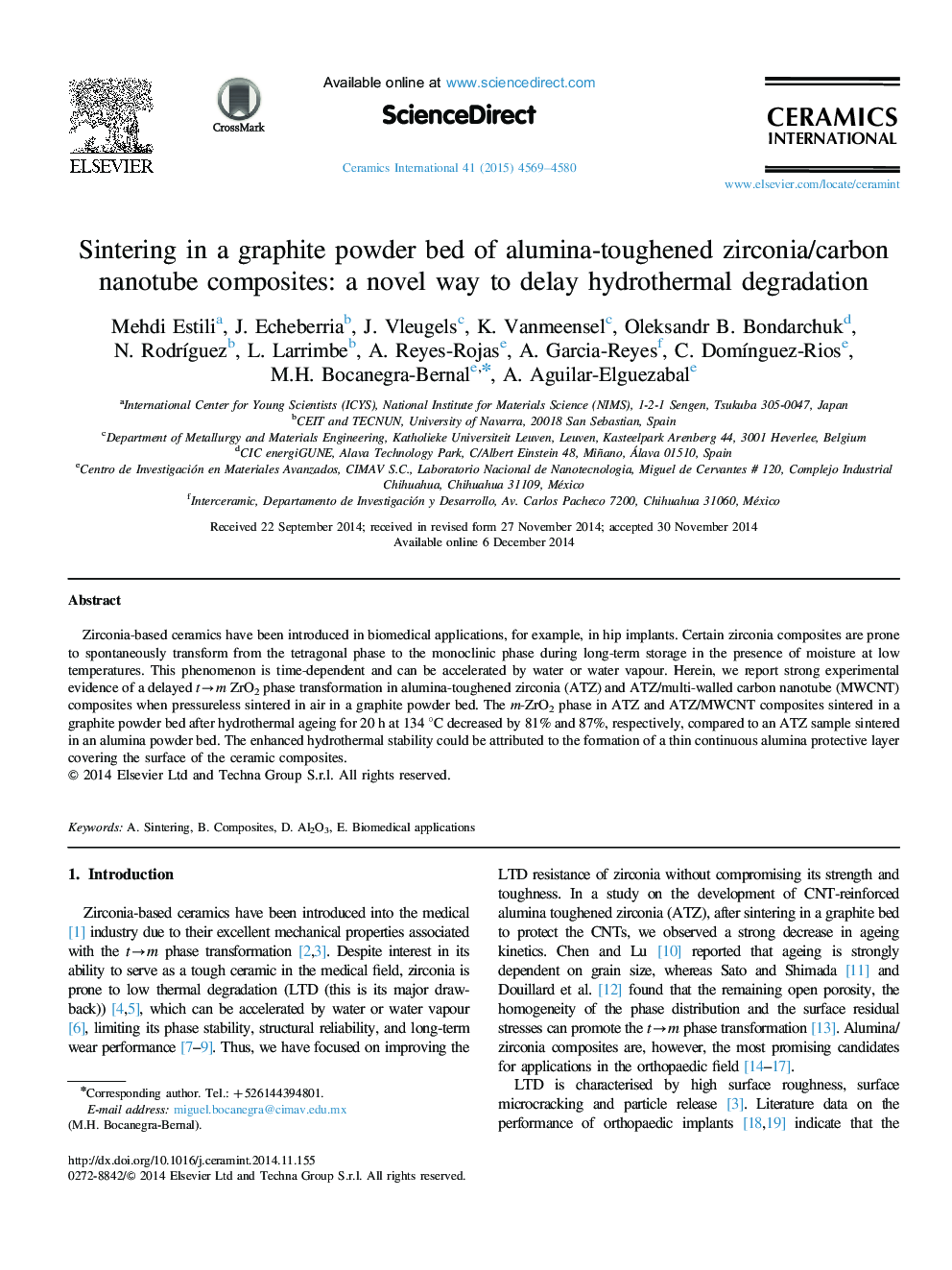| Article ID | Journal | Published Year | Pages | File Type |
|---|---|---|---|---|
| 1460333 | Ceramics International | 2015 | 12 Pages |
Zirconia-based ceramics have been introduced in biomedical applications, for example, in hip implants. Certain zirconia composites are prone to spontaneously transform from the tetragonal phase to the monoclinic phase during long-term storage in the presence of moisture at low temperatures. This phenomenon is time-dependent and can be accelerated by water or water vapour. Herein, we report strong experimental evidence of a delayed t→m ZrO2 phase transformation in alumina-toughened zirconia (ATZ) and ATZ/multi-walled carbon nanotube (MWCNT) composites when pressureless sintered in air in a graphite powder bed. The m-ZrO2 phase in ATZ and ATZ/MWCNT composites sintered in a graphite powder bed after hydrothermal ageing for 20 h at 134 °C decreased by 81% and 87%, respectively, compared to an ATZ sample sintered in an alumina powder bed. The enhanced hydrothermal stability could be attributed to the formation of a thin continuous alumina protective layer covering the surface of the ceramic composites.
